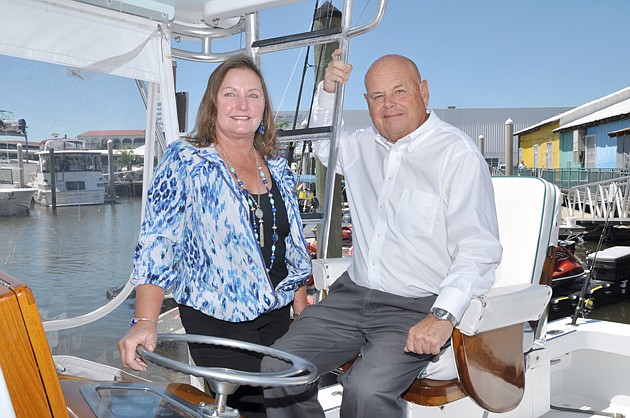Fishermen and scuba divers know the names of all the great reefs. They're on all the nautical charts.
Now, individuals and corporations can name one of six artificial-reef sites off the coast of Southwest Florida, thanks to efforts of a group of volunteers led by Naples attorney Peter Flood and retired Collier County executive Diane Flagg.
The cost to name your reef: $100,000.
The project already has arranged $1.4 million from the BP oil-spill settlement and reef construction is scheduled to start this summer. “We're trying to raise another $2 million,” says Flood.
The vision is to create one of the largest artificial-reef programs in the western hemisphere using private money. It will consist of six quarter-mile-square clusters each containing six artificial reef structures the size of a football field. They will be located 12 to 30 miles offshore Southwest Florida, within easy reach for sport fishermen and in clear water and depths accessible by scuba divers.
Initially, the reefs will be built using 600 specially manufactured concrete modules 8 feet high and 18,000 tons of discarded concrete utility structures from Florida Power & Light and others. As more money and material becomes available in the future, each of the 36 reefs will be able to hold 30,000 tons of environmentally safe concrete.
Concrete structures are preferable to sinking old ships because they last longer and they're less expensive. Flood says concrete can provide habitat for hundreds of years whereas a ship disintegrates within 80 to 90 years.
The artificial reef program is an all-volunteer project led by a group of attorneys, engineers, planners and others who joined a loosely knit group called the Economic Recovery Task Force. The group was originally formed to help stem the foreclosure crisis during the real estate bust, but it has shifted its focus to the reef since the recovery.
Flood, who has done extensive work on behalf of those claiming harm from the BP oil spill in 2010, noticed in the fine print of the settlement with the oil company that municipalities were eligible to receive millions if they applied. With the help of Flagg, the former Collier County code enforcement director, BP awarded Collier County and the cities of Marco Island a total of $1.4 million for the reef project. The money is held in a special reef account and the municipalities have signed an agreement to coordinate spending.
Meanwhile, to keep fundraising expenses low, the Community Foundation of Collier County will manage the money raised for the project. Flood says it was more efficient and timely to use the foundation's nonprofit status than apply for its own. “This gives us instant credibility,” Flood says of the Community Foundation's long-standing reputation in the Naples area.
Besides the six $100,000 reef-naming opportunities that will appear on future nautical charts, donors can sponsor one of the 600 artificial-reef modules for $2,500. To promote the project, the project volunteers created a Web page with a video created by Naples-based Marine Team International, Pure Naples and Scoular Images (you can view it here: www.cfcollier.org/artificial-reef-fund/).
“It's no longer an idea, it's a reality,” says Flood.






